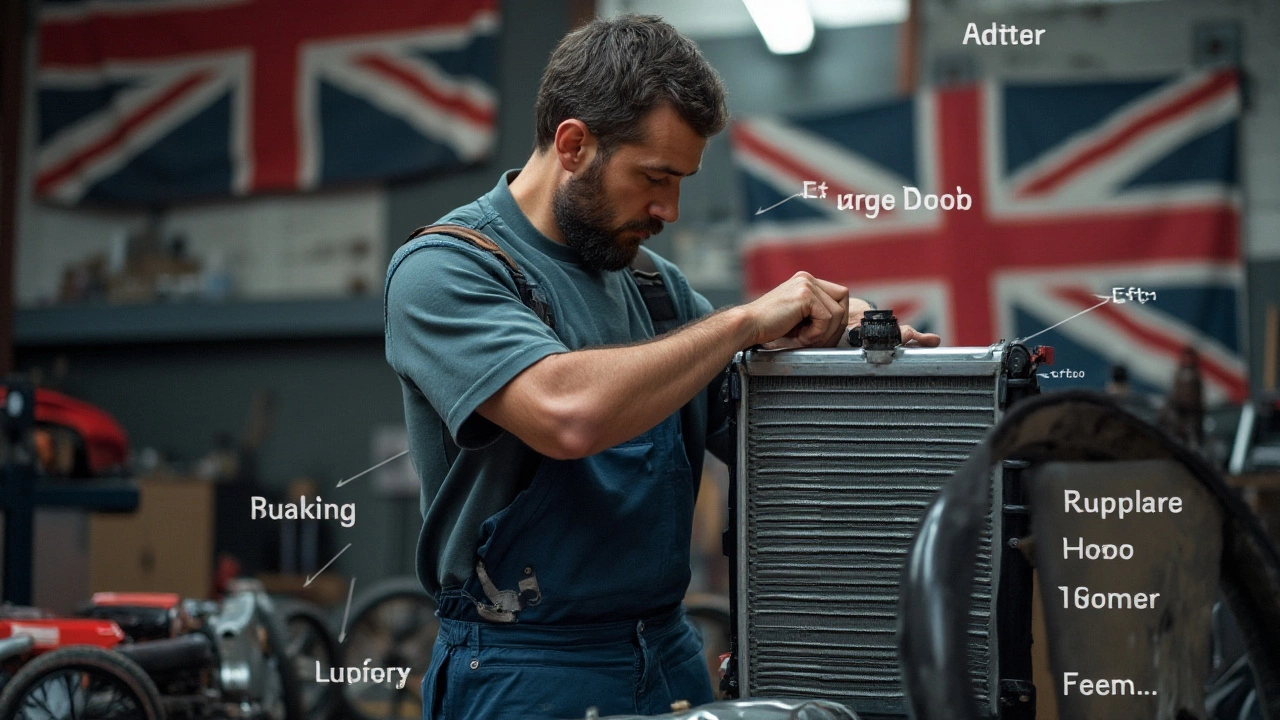Vehicle Cooling System: How It Keeps Your Engine Running Cool
When dealing with vehicle cooling system, the network of components that regulates engine temperature and prevents overheating. Also known as engine cooling system, it pulls heat away from the combustion chamber and releases it to the air. Understanding this system is the first step toward spotting problems before they cost a fortune.
Key Components of a Vehicle Cooling System
The heart of the system is the radiator, a heat‑exchanger that dissipates hot coolant into the surrounding air. It works like the radiator in a house: fluid flows in, heat transfers to fins, and cooler air blows across. If the radiator gets clogged or develops a leak, the engine can overheat in minutes.
Next up is coolant, a specially formulated mixture of water and antifreeze that carries heat away from the engine. Coolant’s boiling point is higher than water’s, so it stays liquid under extreme heat. Low coolant levels or a wrong mix can trigger warning lights and cause serious engine damage.
Temperature control hinges on the thermostat, a valve that opens and closes to regulate coolant flow based on engine temperature. When the engine is cold, the thermostat stays closed, allowing the engine to warm up quickly. Once the optimal temperature is reached, it opens, letting coolant circulate through the radiator. A stuck thermostat is a common cause of both overheating and poor fuel economy.
Circulating the coolant is the job of the water pump, a mechanical pump driven by the engine that pushes coolant through the system. If the pump fails, the whole network stalls and heat builds up fast. Regular checks of pump bearings and impeller condition can save you from a sudden breakdown.
Other pieces—like the electric cooling fan, pressure cap, and expansion tank—support the main loop. The fan kicks in when airflow isn’t enough, such as in traffic jams. The pressure cap maintains the right pressure to raise coolant’s boiling point, while the expansion tank gives the system a place to store excess fluid. Ignoring any of these can lead to air pockets, corrosion, or coolant loss.
Below you’ll find a curated collection of articles that dig deeper into each of these parts, explain warning signs, and offer step‑by‑step fixes. Whether you’re looking to test a radiator, bleed air from the cooling circuit, or replace a thermostat, the posts ahead give practical advice you can act on right now.

Essential Parts to Replace When Changing Your Car Radiator
Jan 27 2025 / Car MaintenanceChanging a car radiator involves more than simply swapping out an old part for a new one. To maintain efficient cooling, it's essential to also consider replacing other critical components that work alongside the radiator. These components ensure that your vehicle's cooling system functions optimally, preventing overheating and extending the life of your car. It's important to stay informed about which parts should be examined and potentially replaced during a radiator change.
VIEW MORE